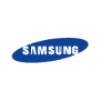Tandem High-dose Chemotherapy and Autologous Stem Cell Rescue in Patients With High-risk Neuroblastoma
Primary Purpose
Neuroblastoma
Status
Completed
Phase
Phase 2
Locations
Korea, Republic of
Study Type
Interventional
Intervention
Cyclophosphamide
Etoposide
Carboplatin
Thiotepa
Melphalan
Total body irradiation
Sponsored by

About this trial
This is an interventional treatment trial for Neuroblastoma focused on measuring tandem high-dose chemotherapy for high-risk neuroblastoma
Eligibility Criteria
Inclusion Criteria:
- Patients with high-risk neuroblastoma
- Patients with intermediate-risk neuroblastoma if gross tumor remained after surgery
Exclusion Criteria:
- Patients with progressive disease before high-dose chemotherapy
- Patients whose parents want to stop or change the planned treatment
- Patients with organ toxicities of NCI grade >2 before high-dose chemotherapy
Sites / Locations
- Samsung Medical Center
Arms of the Study
Arm 1
Arm Type
Experimental
Arm Label
High risk neuroblastoma
Arm Description
Conventional chemotherapy (9 cycles) Surgery conventional chemotherapy (after 6 cycles of chemotherapy) Tandem HDCT/autoSCT First HDCT (cyclophosphamide, etoposide, carboplatin) Second HDCT (total body irradiation, thiotepa, melphalan) Local radiotherapy Retinoic acid, interleukin-2
Outcomes
Primary Outcome Measures
Overall survival and event-free survival, short-term and long-term toxicity of tandem high-dose chemotherapy and autologous stem cell transplantation
Secondary Outcome Measures
Full Information
NCT ID
NCT00793845
First Posted
November 17, 2008
Last Updated
September 17, 2018
Sponsor
Samsung Medical Center
1. Study Identification
Unique Protocol Identification Number
NCT00793845
Brief Title
Tandem High-dose Chemotherapy and Autologous Stem Cell Rescue in Patients With High-risk Neuroblastoma
Official Title
Tandem High-dose Chemotherapy and Autologous Stem Cell Rescue in Patients With High-risk Neuroblastoma
Study Type
Interventional
2. Study Status
Record Verification Date
September 2018
Overall Recruitment Status
Completed
Study Start Date
August 2008 (undefined)
Primary Completion Date
January 2015 (Actual)
Study Completion Date
January 2018 (Actual)
3. Sponsor/Collaborators
Responsible Party, by Official Title
Sponsor
Name of the Sponsor
Samsung Medical Center
4. Oversight
Data Monitoring Committee
Yes
5. Study Description
Brief Summary
The purpose of this study is to evaluate the efficacy and toxicity of tandem HDCT/ASCR in children with high-risk neuroblastoma. In the present study, a single arm trial of tandem HDCT/ASCR will be carried out. In the present study, the investigators will investigate whether tandem HDCT/ASCR might improve the survival of patients with high-risk neuroblastoma with acceptable toxicity.
Detailed Description
The prognosis of high-risk neuroblastoma after conventional chemoradiotherapy is generally poor. Therefore, a strategy using high-dose chemotherapy and autologous stem cell rescue (HDCT/ASCR) has been explored to improve the prognosis of patients with high-risk neuroblastoma. This strategy is based on the hypothesis that dose escalation might improve the survival of children with high-risk neuroblastoma. The results of randomized trials comparing HDCT/ASCR with chemotherapy alone showed a better event-free survival (EFS) in the HDCT/ASCR arm than in the continuous chemotherapy arm. However, the overall EFS was unsatisfactory.
In this context, investigators have examined the efficacy of double or triple tandem HDCT/ASCR to further improve the outcome of high-risk neuroblastoma patients. George et al. carried out a single arm trial of tandem transplantation as consolidation therapy, and reported improved long-term survival (5-year progression-free survival 47%) with acceptable toxicity. Kletzel et al. also conducted a single arm trial of triple tandem transplantation and reported improved survival (3-year EFS 57%). They demonstrated that further dose escalation using sequential HDCT/ASCR might result in further improvements in the survival of patients with high-risk neuroblastoma.
Investigators in the present study also carried out tandem transplantation as consolidation therapy, and reported improved long-term survival (5-year progression-free survival 62%) with acceptable toxicity. However, throughout our previous study, multiple modifications were made in the treatment plan, which resulted in significant variability over time between patients. This variability may create doubt as to whether tandem HDCT/ASCR itself resulted in the improved outcome. In addition, toxic death rate was relatively high (15.4%), although final survival rate was very high (best survival rate ever reported). Therefore, prospective study is needed to evaluate the efficacy and toxicity of tandem HDCT/ASCR.
6. Conditions and Keywords
Primary Disease or Condition Being Studied in the Trial, or the Focus of the Study
Neuroblastoma
Keywords
tandem high-dose chemotherapy for high-risk neuroblastoma
7. Study Design
Primary Purpose
Treatment
Study Phase
Phase 2
Interventional Study Model
Single Group Assignment
Masking
None (Open Label)
Allocation
N/A
Enrollment
40 (Anticipated)
8. Arms, Groups, and Interventions
Arm Title
High risk neuroblastoma
Arm Type
Experimental
Arm Description
Conventional chemotherapy (9 cycles)
Surgery conventional chemotherapy (after 6 cycles of chemotherapy)
Tandem HDCT/autoSCT
First HDCT (cyclophosphamide, etoposide, carboplatin)
Second HDCT (total body irradiation, thiotepa, melphalan)
Local radiotherapy
Retinoic acid, interleukin-2
Intervention Type
Drug
Intervention Name(s)
Cyclophosphamide
Intervention Description
First HDCT
Intervention Type
Drug
Intervention Name(s)
Etoposide
Intervention Description
First HDCT
Intervention Type
Drug
Intervention Name(s)
Carboplatin
Intervention Description
First HDCT
Intervention Type
Drug
Intervention Name(s)
Thiotepa
Intervention Description
Second HDCT
Intervention Type
Drug
Intervention Name(s)
Melphalan
Intervention Description
Second HDCT
Intervention Type
Radiation
Intervention Name(s)
Total body irradiation
Intervention Description
Second HDCT
Primary Outcome Measure Information:
Title
Overall survival and event-free survival, short-term and long-term toxicity of tandem high-dose chemotherapy and autologous stem cell transplantation
Time Frame
from 1 year after second high-dose chemotherapy
10. Eligibility
Sex
All
Accepts Healthy Volunteers
No
Eligibility Criteria
Inclusion Criteria:
Patients with high-risk neuroblastoma
Patients with intermediate-risk neuroblastoma if gross tumor remained after surgery
Exclusion Criteria:
Patients with progressive disease before high-dose chemotherapy
Patients whose parents want to stop or change the planned treatment
Patients with organ toxicities of NCI grade >2 before high-dose chemotherapy
Overall Study Officials:
First Name & Middle Initial & Last Name & Degree
Ki Woong Sung, MD
Organizational Affiliation
Samsung Medical Center
Official's Role
Principal Investigator
Facility Information:
Facility Name
Samsung Medical Center
City
Seoul
Country
Korea, Republic of
12. IPD Sharing Statement
Learn more about this trial

Tandem High-dose Chemotherapy and Autologous Stem Cell Rescue in Patients With High-risk Neuroblastoma
We'll reach out to this number within 24 hrs